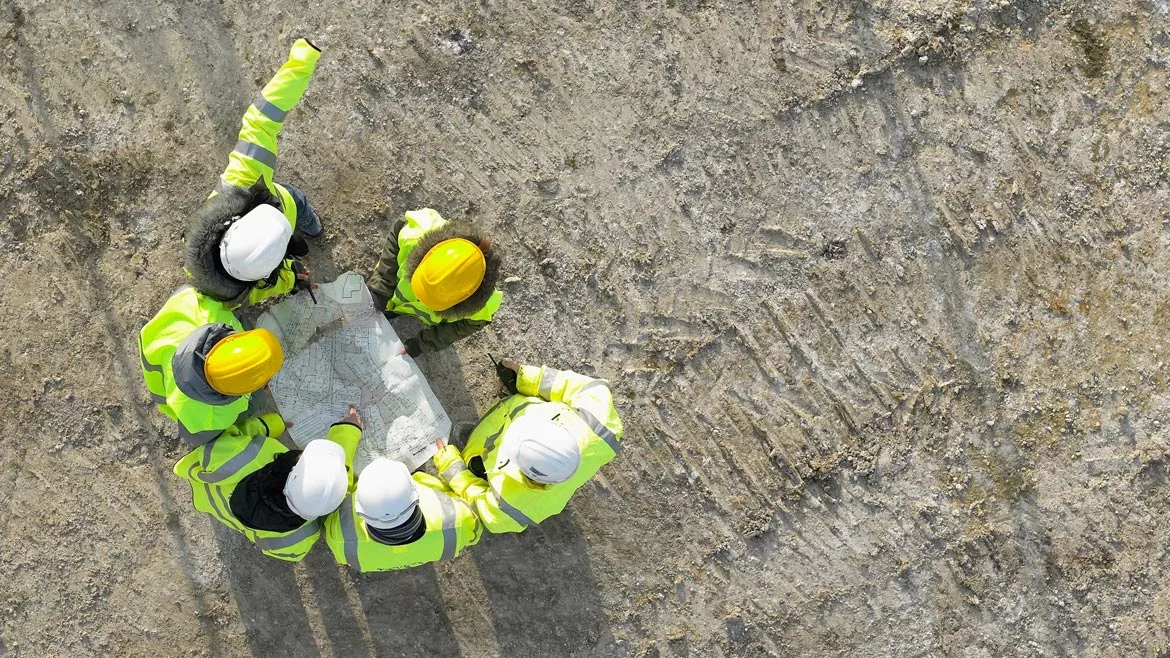Integrated Solutions
Holistic security design
Mitigate vulnerability, reduce risk and keep people safe with thoughtful security design.

Photo_Concepts / Image Source via Getty Images
Safety and security of people and assets are among the highest priorities for many organizations today. With the prevalence of violent events throughout the United States — active shooter events, assaults, civil unrest, etc. — building owners must plan for the safety of their building and its occupants.
To create a safe environment, the security design of a new facility or campus must go beyond basic camera and access control devices to a holistic approach that blends security strategies with technology.
This approach evaluates everything from the layout of hallways and exterior sight lines to the fencing or vegetation used at the perimeter of the property, in addition to the technology typically used for security cameras, access control systems and visitor management. Each strategy plays a role in providing the optimum safety for your building, people and assets.
Implementing these strategies can help mitigate vulnerabilities and reduce the risk of violence, theft and unauthorized access to your facility and assist in managing your campus footprint to keep your people safe in an emergency situation.
Strategy #1: Include security planning early in design
The types of threats faced by building owners have remained the same over the last several decades — natural disasters, active shooters, civil unrest, etc. — but the frequency of these events is increasing and moving into more public spaces, such as hospitals and large event venues. As those who perpetrate threats adapt their strategies to evade standard security measures, tactics for preventing, responding to and recovering from these threats should also evolve.
The first step to getting the most out of your security design is to consult with a security expert from the very beginning of the design process. Security consultants work closely with architects to address all potential threats to people and assets to create a cohesive design that provides a high level of security without detracting from the architect’s aesthetic and overall goals for the building. Discussing security considerations from the beginning of design also provides savings for clients by avoiding costly change orders to add security measures later in the design or construction that also may or may not be effective.
Tailoring security measures to each facility means that the organization’s culture and the architect’s vision can be blended with the security technology to create a design that is not only effective, but also maintains the desired aesthetic.
Strategy #2: Guiding the master plan
Consulting with security experts early in the design will allow you to create a master plan that can be fulfilled on your timeline. An organization's overall culture, whether proactive or passive in their approach to security, will affect the final design of their facility.
This plan will need to consider the following:
- Site environment. Are there trees on the site that could obscure sight lines into or out of the building? Is the site positioned to withstand a natural disaster?
- Building function. A government building will have different security needs than an educational facility, and all building types will have their own unique aesthetic that must be considered.
- Surrounding community population. Crime rates, demographics and the building’s distance from law enforcement and emergency services affect a building’s likelihood of threats and violence.
Strategy #3: Concentric circles of security
Blending security and technology design involves all aspects of a site and the facility. An effective security design provides layers, or concentric circles of security. Each circle encompasses an aspect of security and technology, such as cameras, access control, building envelope, landscaping, Crime Prevention Through Environmental Design (CPTED) principles and more. All these circles work in tandem to provide an all-encompassing security plan that can include:
- Vegetation and perimeter fencing to set territorial boundaries
- Open sitting areas to encourage more watchful eyes in public spaces and deter crime
- Sufficient parking lot lighting
- Clear wayfinding throughout property
- Natural access control at the front entry
- Efficient use of security cameras
Strategy #4: Going beyond technology design
While technology provides a reactive response to security threats and visible security systems can be a deterrent to crime, it’s often not enough to stop those who are set on doing harm. The holistic approach to security design is more effective because it prepares your facility and your staff for the impact of an emergency event and how to respond afterward.
The three components of this strategy for disaster mitigation are to prevent the event from occurring, respond effectively in the event of an active threat and recover post-event. To accomplish this, consider adding the following elements to your design and planning:
- CPTED strategies. Increase physical security without creating an overly institutionalized aesthetic by leveraging architectural elements to create secure environments — a group of strategies called Crime Prevention Through Environmental Design (CPTED). These strategies can include increasing natural surveillance, ensuring territorial boundaries and establishing social management programs.
- Emergency preparedness and response. Establish a plan for your organization’s response to emergencies and disasters and train employees to respond correctly and quickly in an emergency.
- Policy and procedures. Establish a chain of command for senior management that will respond quickly to an event and follow the company’s specific procedures for reporting the incident, providing crisis management, and handling media inquiries.
- Market-specific operational intent. Response to and mitigation of security threats are different for each market, necessitating a unique design for each client. The overall security design will depend on your company or organization culture, desired aesthetics and safety perceptions.
Security design for your facility should be a thoughtful, holistic process. Owners need to look beyond bolt-on technology for their access control and security cameras and approach security design with a deeper understanding of CPTED and preventive security strategies. They also must fully train staff to respond to a variety of events. Using technology in tandem with these security strategies will maximize the protection of your people, assets and property, helping to ensure your organization is resilient when a potential threat becomes reality.
Looking for a reprint of this article?
From high-res PDFs to custom plaques, order your copy today!







